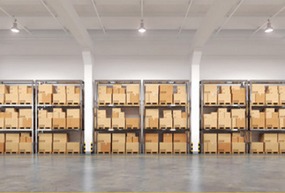There are many areas outside of global shipping and freight forwarding deserving some of the attention for advancing how technology is being used in the logistics supply chain.
And specifically how ecommerce, and by extension the fulfillment warehouse, may be the most impacted area of all.
It’s technology that is allowing retailers and their fulfillment operations to keep up with the massive changes the industry is going through – which is constantly pushing everyone to provide ever faster and cheaper service to customers. The “Amazon Effect” as its known has made free, two-day delivery a basic expectation of most online retailers these days.
Less obvious from the outside are the technologies enabling fulfillment operations to keep up with these types of inflated expectations. Yet there needs to be some restraint on the part of retailers and their supply chain operations. Because, like most things logistics, the warehouse still has to be about managing costs and being accurate.
Technology can help fulfillment operations manage costs in several ways, perhaps most importantly by improving the order picking process. Tech like voice picking, or pick to light make the process of finding and picking the items on an order faster and more accurate. Even more advanced is the use of Augmented Reality. Here, workers with glasses or other electronics are visually directed in ways that help identify specific pick locations or items, as well as provide specific instructions the person needs to accurately fulfill an order.
Another core warehouse function is inventory management where, of course, keeping inventory counts correct and up to date is key. Technology, like scanners and other sensors makes receiving and put away faster and more accurate. Today’s scanners are not just about speed, but are also designed for worker safety and comfort when ergonomics is also considered a priority.
Materials are also transported in the warehouse more efficiently thanks to technology. AGV (Automated Guided Vehicles, like those from ottomotors.com), can move and replenish inventory wherever it’s needed in the warehouse – without any help from a person. Autonomous material handling technology not only improves how materials move around the warehouse, but enable the space within the warehouse to be used more efficiently as well.
Also relevant to ecommerce is the technology that helps with shipping decisions for customer orders leaving the warehouse. These complex choices are important because shipping costs can account for 10% of the cost of a customer order, and are often more than cost of the goods themselves. Optimizing carrier selection for transit time and costs have a big impact on profitability since there’s never a one size fits all approach to shipping. This makes technology that supports decision making vital.
These are just a few examples of how technology is improving efficiency within the warehouse. As the online retail industry continues to evolve, technology will advance in step. The only certainty in any of this is that the demand will continue to be for faster and cheaper delivery to consumers.





